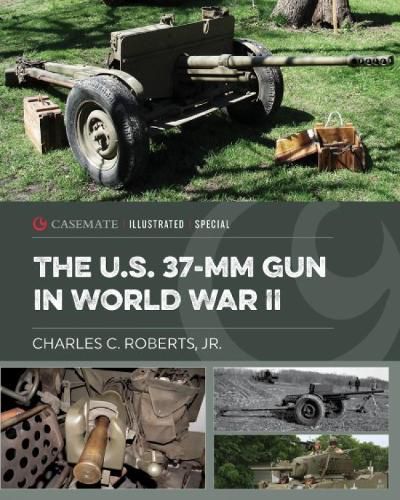Readings Newsletter
Become a Readings Member to make your shopping experience even easier.
Sign in or sign up for free!
You’re not far away from qualifying for FREE standard shipping within Australia
You’ve qualified for FREE standard shipping within Australia
The cart is loading…






Developed in response to the 1899 Hague Convention, the 37-mm gun met the restrictions on the size of weapons that could fire explosive shells, yet was also light and lethal enough to be used in battle. After World War I, in which the French Model 1916 37-mm was used extensively, several countries developed or adopted the 37-mm gun.
Behind in their development of an antitank gun, the United States relied on the German Pak 36 37-mm design as a basis for development. By the mid 1930s, the US Ordnance Department designed the M3 37-mm gun and M4 carriage resulting in a towed antitank gun, the first antitank gun in the US Army. This gun proved effective at the beginning of World War II, but as German armor protection increased, it could not penetrate the frontal armor of many German tanks and was relegated to lesser roles. However, the gun proved effective against the Japanese tanks and Japanese strong points in the Far East. The US military used the gun on several production and experimental armored vehicles including the M3 Lee Medium Tank, the M3 Stuart Light Tank, the M5 Stuart Light Tank, the M8 Armored Car, the T17E1 Staghound Armored Car and the M3A1E3 Scout Car. The gun was also used on several non-armored vehicles, the P39 Aeracobra, and selected naval vessels. Despite its small size, the US M3 37-mm gun served throughout the war, on many vehicles and performed exactly as designed.
Fully illustrated, this is the first complete account of the development and use of the US 37-mm gun in World War II.
$9.00 standard shipping within Australia
FREE standard shipping within Australia for orders over $100.00
Express & International shipping calculated at checkout
Developed in response to the 1899 Hague Convention, the 37-mm gun met the restrictions on the size of weapons that could fire explosive shells, yet was also light and lethal enough to be used in battle. After World War I, in which the French Model 1916 37-mm was used extensively, several countries developed or adopted the 37-mm gun.
Behind in their development of an antitank gun, the United States relied on the German Pak 36 37-mm design as a basis for development. By the mid 1930s, the US Ordnance Department designed the M3 37-mm gun and M4 carriage resulting in a towed antitank gun, the first antitank gun in the US Army. This gun proved effective at the beginning of World War II, but as German armor protection increased, it could not penetrate the frontal armor of many German tanks and was relegated to lesser roles. However, the gun proved effective against the Japanese tanks and Japanese strong points in the Far East. The US military used the gun on several production and experimental armored vehicles including the M3 Lee Medium Tank, the M3 Stuart Light Tank, the M5 Stuart Light Tank, the M8 Armored Car, the T17E1 Staghound Armored Car and the M3A1E3 Scout Car. The gun was also used on several non-armored vehicles, the P39 Aeracobra, and selected naval vessels. Despite its small size, the US M3 37-mm gun served throughout the war, on many vehicles and performed exactly as designed.
Fully illustrated, this is the first complete account of the development and use of the US 37-mm gun in World War II.